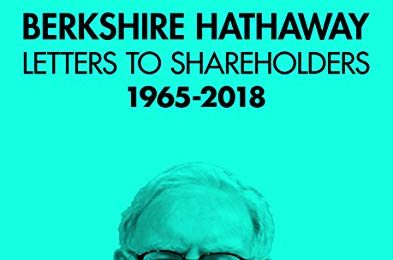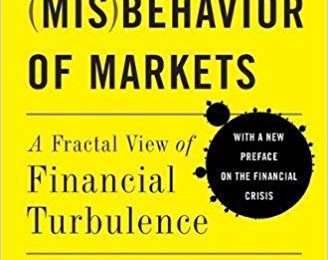Contents
The shape of both the inverted hammer and shooting star are quite similar to each other. They both have a long upper shadow with a very small or no lower shadow. In addition, both opening, closing, and low are very close to each other. A hammer candlestick mainly appears when a downtrend is about to end. The default “Intraday” page shows patterns detected using delayed intraday data.


This could be because of taking profits being hit from short-sellers, or any other possible reason why buy orders would flood the market at that time. In this case, we see a short entry near an all-time high made by the S&P 500 Index. Normally, catching the beginning of the trend is a very hard thing to do, but here’s how you might do it.
Recognition Criteria for a Hammer:
https://forex-world.net/rs get confirmation when the candle right after the hammer closes higher than the latter’s closing price. Once the confirmation candle appears, traders exit their short position or take a long position. Individuals entering a long position can place a stop loss order below the hammer’s low price. The inverted hammer candlestick pattern is a candlestick that appears on a chart when there is pressure from buyers to push an asset’s price up. It often appears at the bottom of a downtrend, signalling potential bullish reversal. The hammer candlestick pattern is seen as a reversal pattern, which means it occurs at the end of a downtrend and signals a potential move higher.
It shows that buyers are in full power and strong strength from the support zone. That’s why the price will bounce from the support zone, and a bullish trend reversal will happen. A hammer candlestick is a trend reversal pattern spotted at the bottom of a downtrend.
Candlestick Channels return channels whose extremities converge towards the price when a corresponding candlestick pattern is detected. This allows for us to obtain more reactive extremities in the presence of a cluster of candlestick patterns. The detected candlestick patterns are also highlighted with labels on your chart automatically.
What Does the Hammer Candlestick Mean?
An inverted hammer candlestick is identical to a hammer, except it is upside down. Moreover, similar to the latter, the former serves as a bullish reversal indicator. An inverted hammer mainly appears at the end of a downtrend and signals the possibility of a new bull run.
- With over 34+ all candlestick patterns to learn from, you certainly need to be made aware of it, because without it you could miss out on huge opportunities.
- For example, you might look for a move above the candlestick high, or for the next candlestick to be bullish.
- INVESTMENT BANKING RESOURCESLearn the foundation of Investment banking, financial modeling, valuations and more.
- Only a hammer candle is not a strong enough sign of a bullish reversal.
- A hammer candlestick is a trend reversal pattern spotted at the bottom of a downtrend.
However, it is slightly more comforting to see a blue-coloured real body. The chart below shows the presence of two hammers formed at the bottom of a downtrend. As usual, the hammer should represent a reversal signal – in this case, the beginning of a new uptrend. The lower shadow should be at least twice the height of the real body. The hammer should have no upper shadow, but can have an upper shadow if it is relatively small.
The content on this website is provided for informational purposes only and isn’t intended to constitute professional financial advice. Trading any financial instrument involves a significant risk of loss. Commodity.com is not liable for any damages arising out of the use of its contents. When evaluating online brokers, always consult the broker’s website. Commodity.com makes no warranty that its content will be accurate, timely, useful, or reliable.
Strategy 3: Intraday Trading with Moving Average
Hammer candlesticks are very useful to traders since they allow them to use many strategies and be precise enough when deciding when to buy and sell. In this strategy, you’ll learn to trade with this candlestick pattern. The bearish version of the Hammer is the Hanging Man formation.

On bigger https://forexarticles.net/frames , the Hammer candlestick demonstrates a prolonged trend change. The picture above shows an example of placing a Buy Stop order with a Stop Loss and Take Profit after the Hammer Pattern appeared during the downtrend. Take Profit was set at a distance three times bigger than the one between the SL level and Buy Stop.
Discover Hidden Opportunities with Supply & Demand indicator
In addition to the hammer candlestick formation, other candlestick charting market reversal signals include the hanging man candlestick and the shooting star candlestick. The hammer candlestick is a bullish reversal pattern that forms when a stock trades lower than its opening price, but rallies within the period to close near that same opening price. This candlestick looks like a hammer, with a long lower shadow or wick, a small or non-existent upper wick, and a small body.
This will be pre-defined before you enter the trade but you want to target the next forex market structure or the next resistance level. Doji is also called an indecisive candle as there is no specific indication/decision. For this reason, doji candles and 2-3 more candlesticks are used to identify the pattern for better outcomes and interpretations. A big green candle should be formed after the hammer to confirm the reversal, i.e., an uptrend in the price of a security. This script displays all candle patterns found in multi-time frames for a given lookback period.
What is a hammer candlestick?
A hammer candlestick is a technical trading pattern that resembles a “T” whereby the price trend of a security will fall below its opening price, illustrating a long lower shadow, and then consequently reverse and close near its opening. Hammer candlestick patterns occur after a downtrend. They are often considered signals for a reversal pattern.
And place stop loss below the low of the hammer candlestick or the support zone. You should always choose the conservative way to set stop loss if you don’t have much trading experience. So, sellers tried their best to keep the bearish trend dominant in the case of the hammer pattern.
Fortunately, the buyers had eaten enough of their Wheaties for breakfast and still managed to close the session near the open. The only difference between them is whether you’re in a downtrend or uptrend. This should set off alarms since this tells us that there are no buyers left to provide the necessary momentum to keep raising the price. Our gain and loss percentage calculator quickly tells you the percentage of your account balance that you have won or lost. Find the approximate amount of currency units to buy or sell so you can control your maximum risk per position.
Is a hammer candlestick pattern bullish?
The hammer candlestick is a bullish trading pattern that may indicate that a stock has reached its bottom and is positioned for trend reversal. Specifically, it indicates that sellers entered the market, pushing the price down, but were later outnumbered by buyers who drove the asset price up. Importantly, the upside price reversal must be confirmed, which means that the next candle must close above the hammer’s previous closing price.
The https://bigbostrade.com/ candlestick pattern is a strong market trend reversal indicator. Using it in your reversal strategy will help you identify buy and sell levels in the market. Trade with Blueberry Markets to get the most of the top candlestick patterns. This candlestick is formed after a long downtrend and signals an uptrend market reversal. With this candlestick, traders can enter buy positions since the market is expected to witness a potential increase in the prices. At the same time, it is possible for the opposite to happen.
However, this same form found at the top of uptrends is called shooting star. The shooting star is a type of candlestick pattern and refers to the candle’s shape and appearance, representing a potential reversal in an uptrend. This means that it typically forms at the end of a downtrend and signals a potential move higher.
